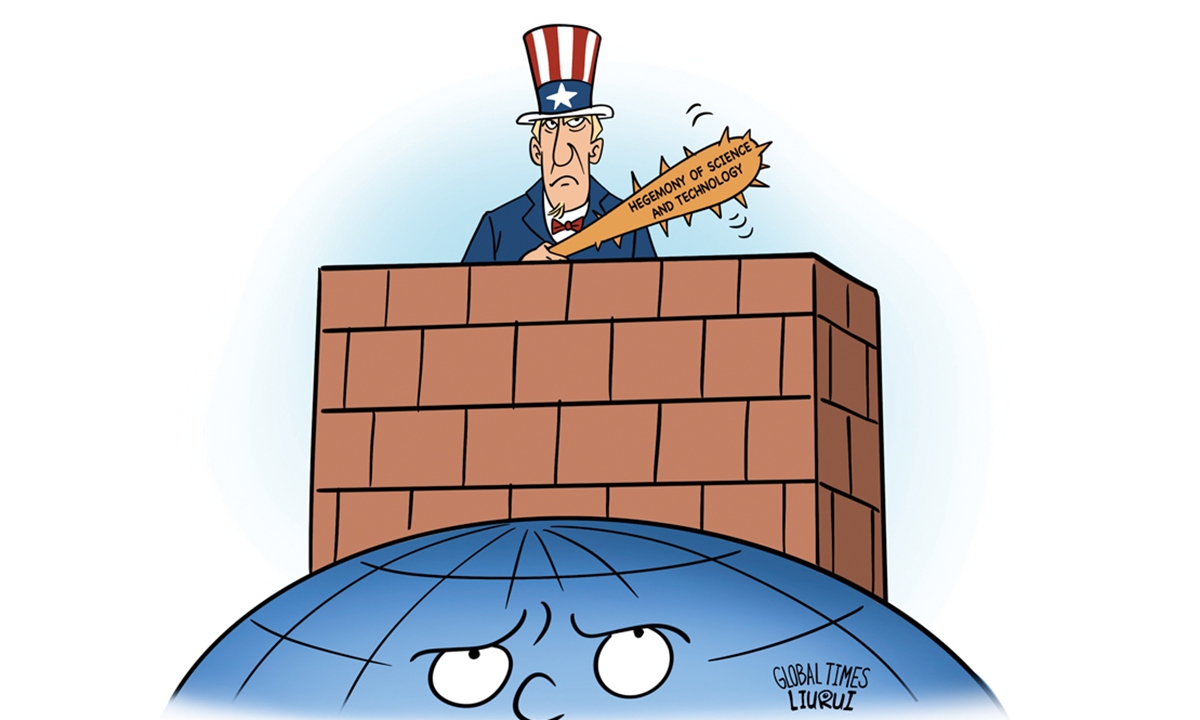
Illustration: Liu Rui/GT
Since DeepSeek ignited a global artificial intelligence (AI) boom, the US' "China threat" narrative has also received a "version update." From revelations that the US Commerce Department banned the use of DeepSeek on government devices to Commerce Secretary Howard Lutnick urging tighter controls on open-source AI models, particularly those from China, the US is expanding its suppression tactics to AI. A new version of the "China threat" narrative has emerged - the "China AI threat" narrative.
On Wednesday, the US added 80 companies to its export control list, including more than 50 based in China. The US claimed these companies sought advanced know-how in supercomputing, AI and quantum technology for military purposes.
In addition, the US intelligence community released its annual threat assessment report on Tuesday, claiming that China is most likely planning to use large language models to create fake news and seeking to displace the US as the top AI power by 2030.
A series of actions indicate that the US government is intensifying the construction of the "China AI threat" narrative. This is no coincidence. In recent years, every technological breakthrough in China has been met with the US' "China threat" rhetoric. Washington's logic is simple: China must not lead. The moment China shows signs of surpassing the US in any field, it is immediately labeled a "threat," followed by various suppression tactics.
"Rather than calling it hyping the 'China threat,' it would be more accurate to say that the US is in a state of panic over China's AI development," Lü Xiang, a research fellow at the Chinese Academy of Social Sciences, said. "AI development has now entered an unprecedented, uncharted territory - the speed and depth of progress in this field have far exceeded what people imagined many years ago," Lü Xiang added. The US' obsession with "leading" may ultimately be meaningless.
Looking back, the US restricted Chinese electric vehicle and battery companies from entering the US market, but the technological and supply chain shortcomings of US companies could not be overcome, leading to the slow development of this industry. Now, the US is applying the same strategy to the AI field.
From banning US companies from supplying chips to Chinese firms to coercing allies into joining the blockade, every move the US makes aims to exclude China from the global technology system. However, history has shown that US technological blockades have not only failed but have also repeatedly backfired - failing to curb China's development while also disrupting the stability of global supply chains.
Beyond keeping its anti-China rhetoric "up to date," US technological blockades ultimately end up "shooting itself in the foot." "Such blockades will force Chinese companies to accelerate independent R&D, pushing China to forge its own path," Lü added. The "China AI threat" narrative is merely a reflection of the US' anxiety and its loss of control over the AI field.
Global collaboration is essential for AI's advancement. However, the US insists on dragging AI into geopolitical competition, advocating for technological isolation and confrontation, and even attempting to artificially create a "technological iron curtain." The real threat is not China's technological rise, but the US' malicious interference in global technological development for geopolitical purposes.




